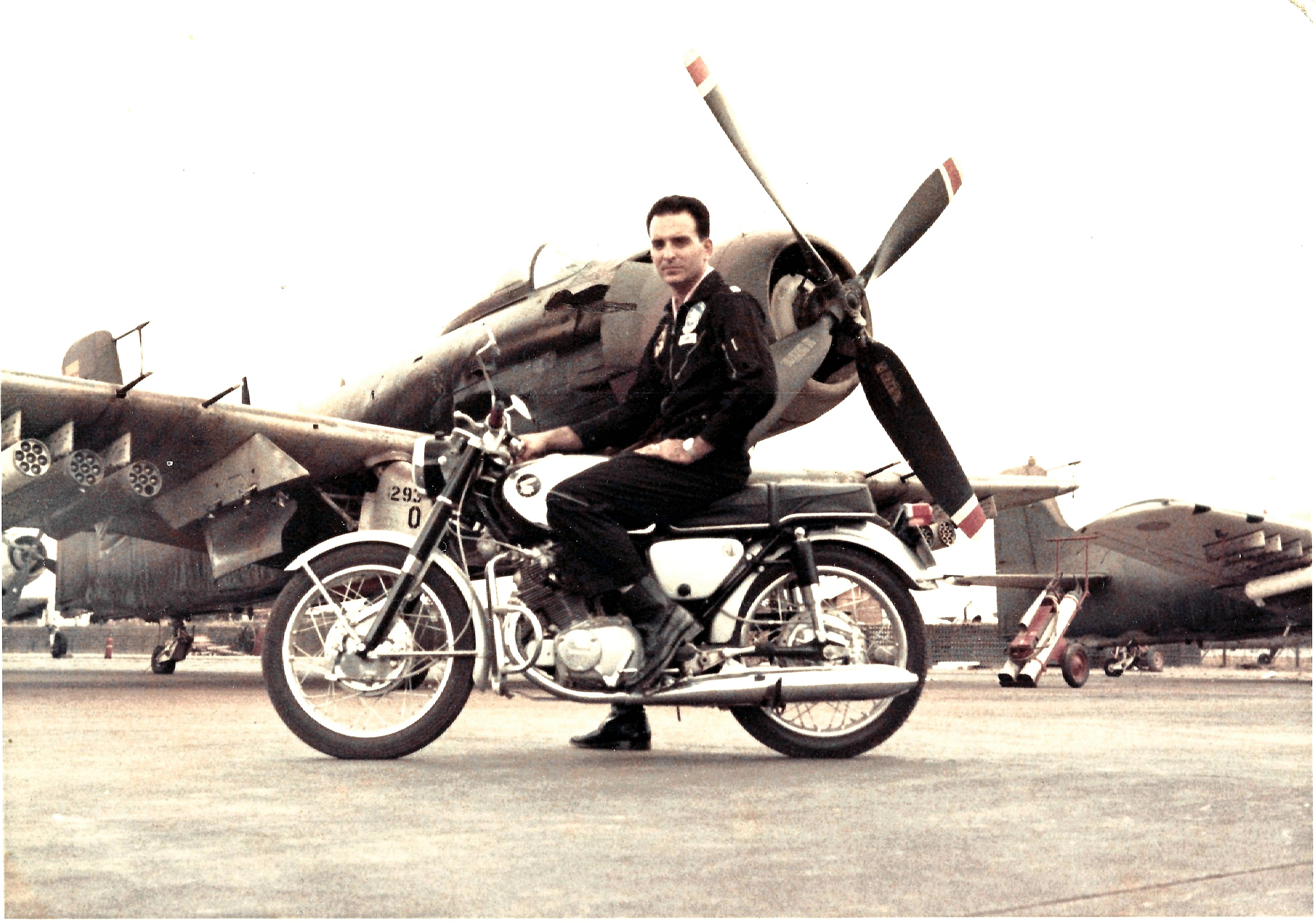
Michael J. Clarke
SEA Experiences
Thirty-nine USAFA graduates, from classes 1959 through 1969, (five from the Class of 1960), flew the A-1 in combat in SEA. From 1964 through 1972, USAF pilots flew over 90,000 SEA combat missions in the venerable Douglas A-1 Skyraider (SAR, CAS, AI, and SOs) in South Vietnam, Laos, and North Vietnam. The danger inherent in these missions is reflected in the A-1 loss rate per 1000 sorties being the highest of all fighters employed in SEA. The Vietnam War Memorial in our Nation’s Capital lists 144 Skyraider pilots, 104 USAF and 40 USN, killed in action, seven were USAFA graduates.
I served as an Ops Advisor to a VNAF A-1 Ftr Sq. It was an honor achieved in an unusual way. I volunteered for Vietnam, specifically in A-1s. However, I was assigned to C-123s with checkout at Hurlburt in the fall of 1964, sharing the class with Earl Van Inwegen. During the checkout I was upgraded to IP. I also learned about Ranch Hand, the Aerial Defoliation program aborning in SEA. I volunteered for this and received follow-on spray training over Plum Tree Island off the coast of Virginia. I would later learn that all Ranch Hand Aviators at that time were double volunteers.
When I reported to Ranch Hand in early 1965, I was struck by the huge (10’ x 4’) red/white&blue banner inscribed with “F… Communism” on the wall facing the Quonset hut entrance. Under the main message was a smaller one stating; “Sponsored by the Daughters of the American Revolution”. Given the impact the DAR had on the final sighting of the USAFA, I couldn’t help but smile and thinking--I’m in the right place.
We were collocated at the end of Charlie Row, Tan Son Nhut Air Base, with Air Vice Marshall Nguyen Cao Ky’s handpicked 522nd VNAF Ftr Sq, along with his personal Villa. I got to know the advisors and a number of the VNAF pilots, including Thieu Ta (Major) Thung, who had received his pilot training at Reese where I later became an IP. During my Ranch Hand down time I was allowed to fantasize and get as much cockpit time as I wanted in the A-1s while also studying the NATOPS Manuals given to me.
There were four USAF Advisors assigned to each of the seven VNAF A-1 Ftr Sqs; a rated Major, advisor to the Sq Co, a rated Capt for Flt Ops, a Capt for Intel, and a Mstr Sgt for Maint. The 522nd Ops Advisor became incapacitated with a leg wound and was being sent home. He and Thieu Ta Thung offered me the opportunity to take his place until a replacement could be trained in the States and pipe-lined to the squadron. I couldn’t believe my luck, and my Ranch Hand CO, and Premier Ky, gave me the green light.
I extended my tour and received an in-country checkout and began flying combat missions in single seat A-1 H/Js with these very capable VNAF pilots. I earned my Flight Lead credentials, and the coveted black flying suit, adorned by a number of patches designed by Ky himself, on or near my tenth mission. Our call sign was Than Phong, Devine Wind in English, and KamiKaze in Japanese. Ky had an offbeat sense of humor and a SE Asian sense of mortality, which were embodied in his flight suit patch designs. There were two main patches, each containing its own mythological figurehead, plus five stars. The stars depicted the five directions in which a mortals life could go--North, South, East or West, and either Heaven or Hell.

My Pony and My Horse
Unfortunately, the in-the-pipe-line Advisor showed up, and I repatriated to Ranch Hand on my extended tour.
In the end I was credited with 343 Combat sorties and 583 combat hours. 249 of those sorties were with Ranch Hand, and 94 with the 522nd.
Those of us who flew the A-1 in SEA shared one singular, noteworthy honor; we were the last American Fighter Pilots to fly a propeller driven fighter in combat. The five 1960 graduates were R.G. Head, Ed Leonard, George Luck, George Pupich, and myself, Michael J. Clarke. A tip of the hat to my fellow Spad drivers, we were truly Nulli Secundus.